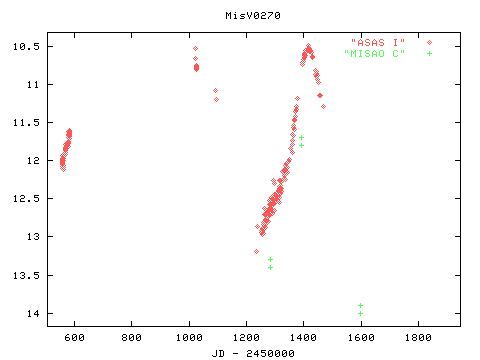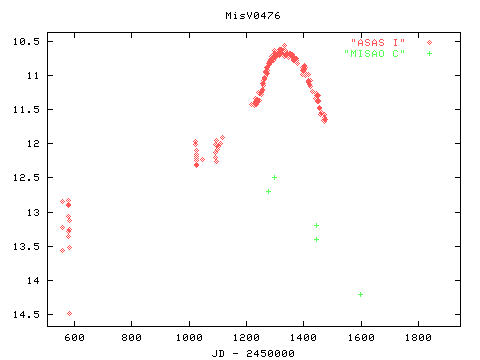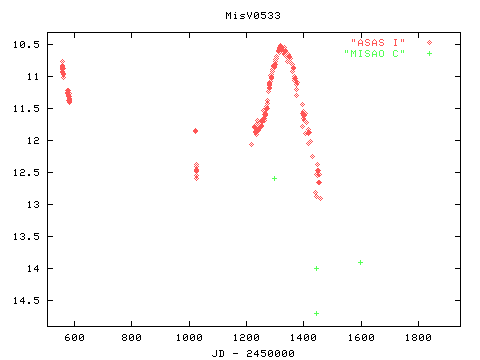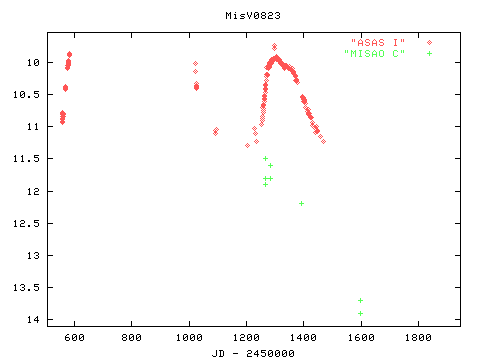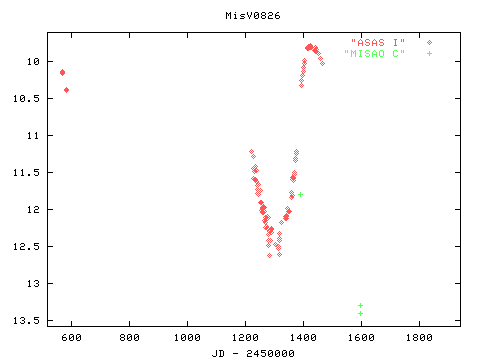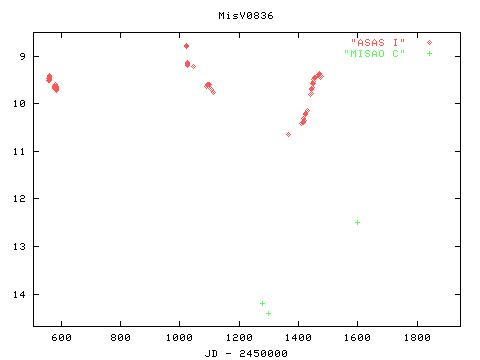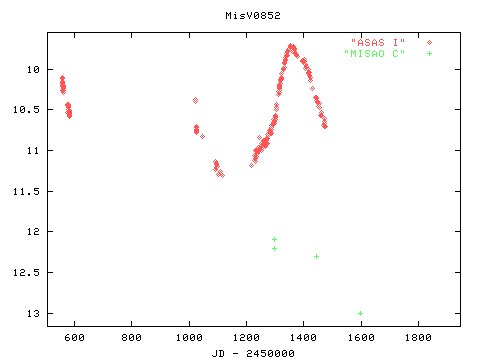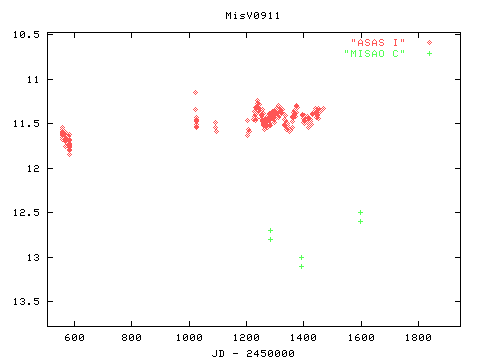Home Page Updated on July 13, 2002
Light Curve Analysis of MisV Stars Identified with ASAS VariablesAugust 28, 2000Yoshida, S.; Greaves, J. This report describes the analysis of light curves of 11 MISAO Project new variable stars identified with ASAS new variable stars, based on the I-band CCD magnitude observed by the ASAS project and the unfiltered CCD magnitude observed by the MISAO Project. MisV0270 = ASAS 165942-2250.2
It was observed many times by the ASAS project. It is a Mira type variable star with a period of 390 days. The MISAO observtions well correspond to those by the ASAS. MisV0271 = ASAS 170149-2301.3
The ASAS observations reveal that it is SR-type with a period of 340 days. But the light curve behaves a bit strange around the peak. MisV0430 = ASAS 184339-0004.5
The ASAS observations reveal that it is SR-type with a period of 280 days. However, in case there were no systematic shift between the ASAS and TASS magnitude, the period would be 260 days. The TASS I-band CCD observations are researched by Michael Richmond. MisV0476 = ASAS 175659-2406.2
It was observed many times by the ASAS project, around the peak. The MISAO observtions well correspond to those by the ASAS. MisV0492 = ASAS 180033-2416.3
The ASAS observations reveal that it is Mira type with a period of 550 days. MisV0533 = ASAS 175752-2241.5
The ASAS observations reveal that it is Mira type with a period of 400 days. MisV0823 = ASAS 170101-2249.7
The ASAS observations reveal that it is SR-type type with a period of 350 days. Both the ASAS light curve and the MISAO observations show that the brightening before the peak is very rapid, on the other hand, it is slowly fading after the peak. MisV0826 = ASAS 165812-2331.2
The ASAS observations reveal that it is Mira type type with a period of 300 days. MisV0836 = ASAS 175819-2336.5
The ASAS observations imply the period around 500 days, but very uncertain. MisV0852 = ASAS 180302-2342.4
The ASAS observations reveal that it is SR-type type with a period of 435 days. It seemed to be fading on and on only based on the MISAO observations, but in fact the MISAO missed the peak. MisV0911 = ASAS 170103-2317.1
It was observed many times by the ASAS project. It seems to be a short periodic variable star. However, analysis using the Phase Dispersion Minimization (PDM) for Windows lists up such candidates as 71 days, 77 days, 130 days and 140 days as the period, though it is uncertain which is the real period. So MisV0911 is probably an irregular type. |

